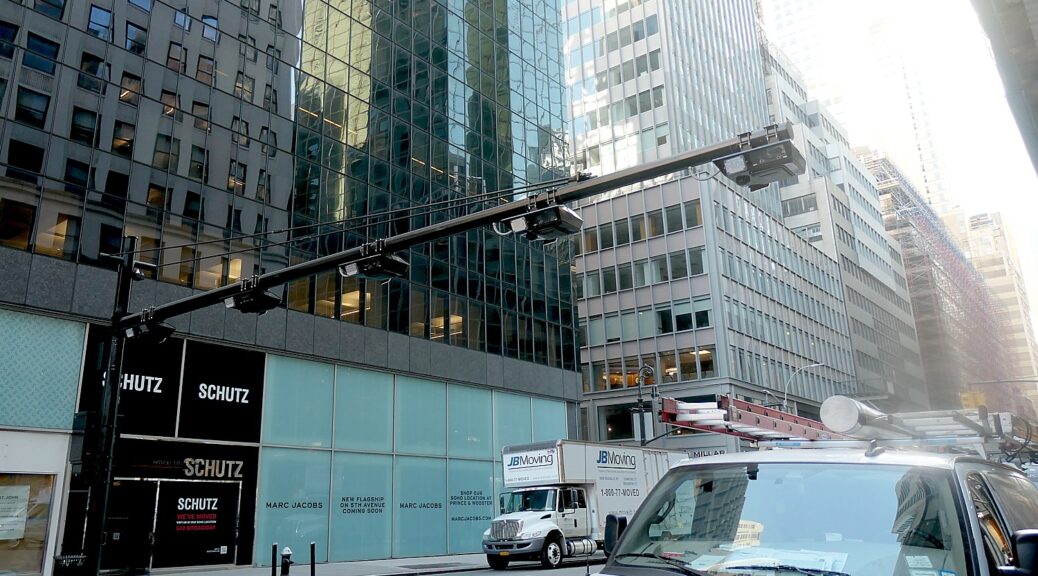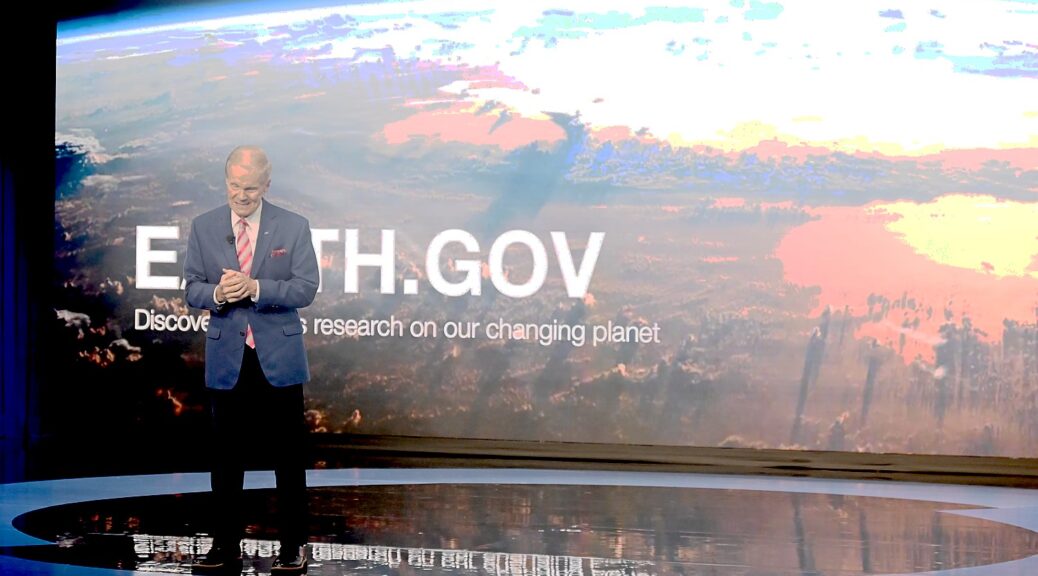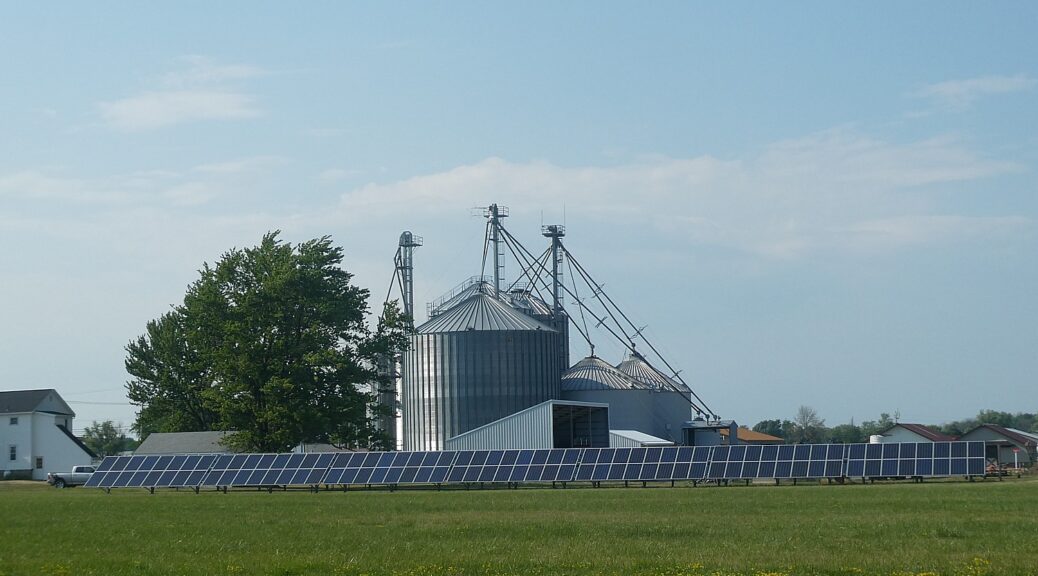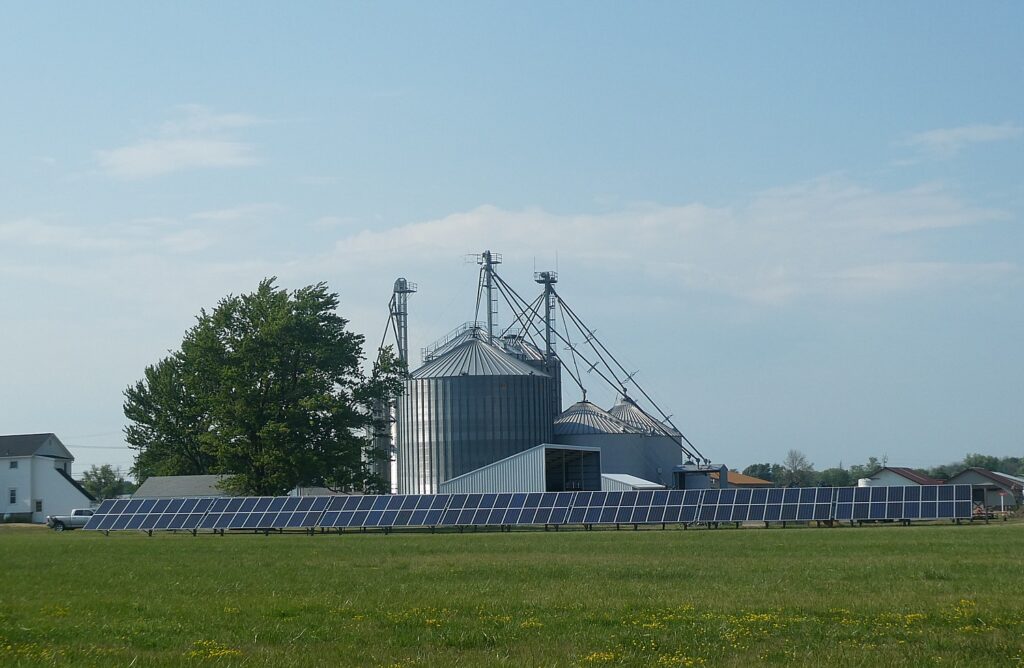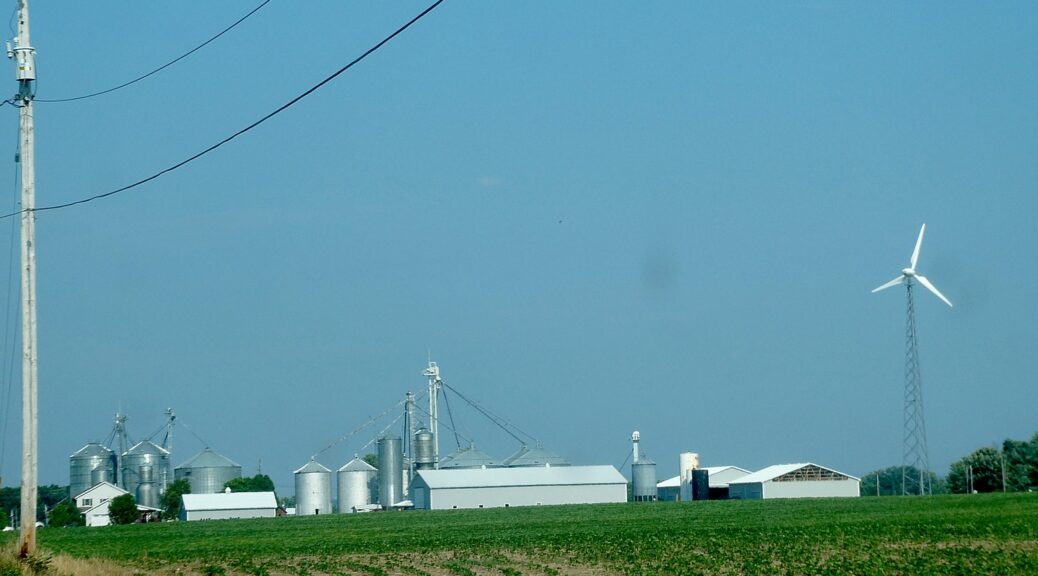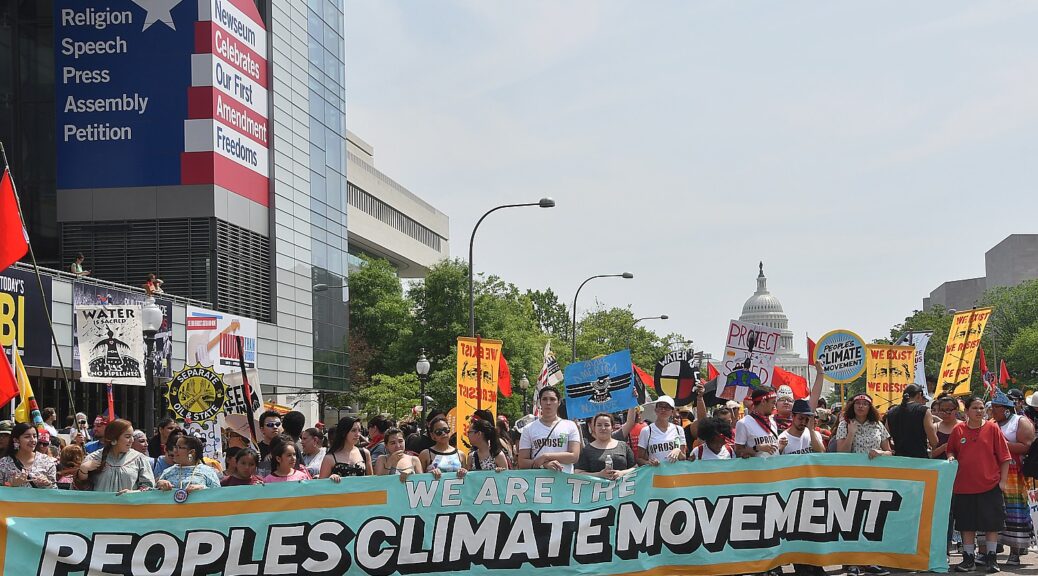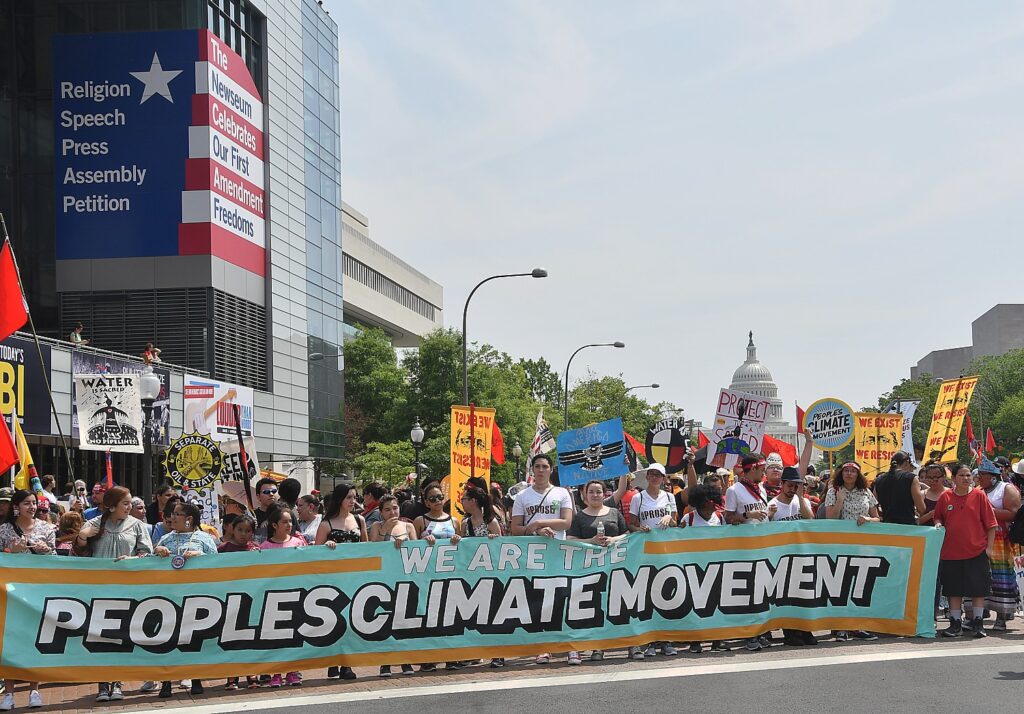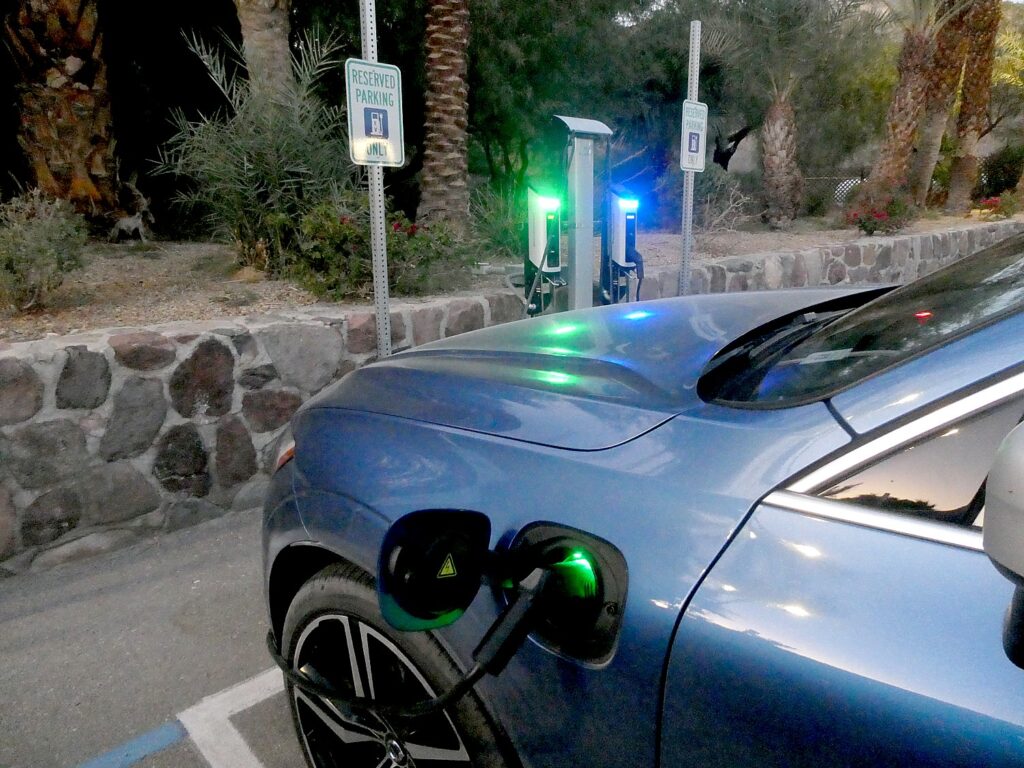
Three years in, President Biden’s executive order has catalyzed global markets and put the U.S. Government on track to meet his ambitious sustainability goals and save taxpayers money. This fact sheet was provided by the White House:
When President Biden entered office, he pledged to restore America’s climate leadership and charged the Federal Government to deliver on that promise. He recognized that as the single largest land owner, energy consumer, and employer in the nation, and the largest purchaser on Earth, the Federal Government can catalyze private sector investment and expand the economy and American industry. The Biden-Harris Administration has transformed how we build, buy, and manage electricity, vehicles, buildings, infrastructure projects, and other operations to be clean and sustainable, while creating good clean energy jobs, supporting American manufacturing, and saving taxpayers money by cutting energy and operating costs.
The President’s Executive Order (E.O.) 14057 on Catalyzing Clean Energy Industries and Jobs Through Federal Sustainability and the accompanying Federal Sustainability Plan directs the U.S. Government to achieve net-zero greenhouse gas (GHG) emissions by 2050 while boosting domestic manufacturing, supporting clean energy industries, creating high-paying union jobs, and cutting energy costs. As part of the President’s Investing in America agenda, the U.S. government has invested over $12 billion and launched thousands of projects to transition to electric vehicles, clean construction materials, and energy-efficient buildings powered by 100% clean electricity.
The President’s actions have created a bold new playbook to turn the climate crisis into economic opportunity. Just three years after President Biden signed E.O. 14057, GHG emissions from Federal operations are down 38% from 2008 levels. This puts the U.S. Government over halfway to the President’s goal of a 65% emissions reduction from Federal operations by 2030.
Take a look at the Biden-Harris Administration’s Federal sustainability progress by the numbers:
- Ordered nearly 82,000 zero-emissions vehicles (ZEVs) for the Federal fleet and installed 10,500 charging ports at Federal facilities nationwide, with an additional 52,500 charging ports in progress;
- Supported the U.S. Postal Service’s commitment to acquire 100% electric delivery trucks by 2026 – the first of which have already started to roll through neighborhoods – by leveraging an investment of $3 billion from the Inflation Reduction Act;
- Developed a clean electricity procurement pipeline with energy suppliers across 36 states that would move the Federal Government from its current 40% clean electricity match to 70% by 2027, on its way to 100% by 2030;
- Generated over $8 billion in private sector funding to launch thousands of modernization projects that will deliver energy- efficient, climate resilient, and all-electric Federal buildings, including at least 2,700 net-zero emissions buildings that are complete or underway today;
- Catalyzed America’s clean manufacturing industry by deploying nearly $4.5 billion in Inflation Reduction Act funding to use American-made low-carbon steel, concrete, asphalt, and glass in Federal infrastructure projects;
- Released the first comprehensive measurement of the Federal Scope 3 GHG footprint, launched a Federal supplier climate scorecard, and took additional actions that put the Federal Government on track to cut its Scope 3 emissions by 30% by 2030;
- Established the Federal Government’s first-ever goal to phase-out Federal procurement of single-use plastics from food service operations, events, and packaging by 2027, and from all Federal operations by 2035;
- Directed the nation’s two million Federal employees to prioritize the use of sustainable transportation, including electric vehicles (EVs), for business travel;
- Rallied other countries to accelerate their climate ambition by launching the U.S.-led Net-Zero Government Initiative, under which the United States and 33 partner countries have committed to achieve net-zero emissions from national government operations by 2050 and to publish roadmaps for reaching this goal; and
- Powering the White House complex with carbon-free electricity that will account for 95% of its total usage and installed new EV charging infrastructure to power its vehicle fleet, which will soon include electric vehicles. White House buildings have also been upgraded to reduce energy use and costs.
- Supported the U.S. Postal Service’s commitment to acquire 100% electric delivery trucks by 2026 – the first of which have already started to roll through neighborhoods – by leveraging an investment of $3 billion from the Inflation Reduction Act;
President Biden has taken the most significant and comprehensive actions ever to set the Federal Government on a course toward a cleaner, more efficient, and resilient future – establishing a historic legacy with benefits that will continue to be felt for years to come. With broad support from America’s manufacturers, clean energy developers, labor organizations, business leaders, states, and communities, the Federal Government’s 300,000 buildings, 600,000 vehicles, and $750 billion in annual procurement power will continue to be more sustainable and resilient while supporting good jobs, cutting costs, and saving taxpayers money.
Delivering on President Biden’sFederal Sustainability Plan
Electrifying the Federal Fleet: With more than 600,000 cars and trucks, the Federal Government is the largest vehicle fleet owner in the world. Transitioning this fleet to ZEVs is a core focus of President Biden’s Federal Sustainability Plan, which targets 100% ZEV acquisitions by 2035, including 100% light-duty acquisitions by 2027. At the start of the Administration, the Federal fleet included fewer than 2,000 ZEVs. Since President Biden took office, the Federal Government has ordered nearly 82,000 electric vehicles and installed 10,500 EV charging ports at Federal facilities, with an additional 52,500 ports in progress.
New, American-made electric United States Postal Service (USPS) delivery trucks are also beginning to roll through neighborhoods. USPS, which maintains over 200,000 vehicles, has committed that all Next Generation Delivery Vehicles in 2026 and thereafter will be electric vehicles. As part of that transition, the Postal Service is equipping hundreds of its sorting and delivery centers with electric vehicle charging stations.
Advancing Carbon-Free Electricity: Federal agencies have moved expeditiously to meet President Biden’s charge of powering all Federal operations with 100% carbon pollution-free electricity (CFE) by 2030, including 50% on a 24/7 basis, by taking a new approach to procuring electricity. Through engagement with energy suppliers across 36 states, the Biden-Harris Administration developed a clean electricity procurement pipeline that would move the Federal Government from its current 40% clean electricity match to 70% by 2027 on its way to 100% by 2030.
The General Services Administration (GSA) made history by executing the first-ever whole-of-government approach to procuring CFE clean electricity. GSA also executed the Federal Government’s first-ever contract for locally-supplied CFE delivered on a 24/7 hourly basis in Arkansas. Utilities have responded enthusiastically to GSA’s new approach, entering agreements to power Federal facilities in 24 states and the District of Columbia with 100% CFE by 2030.
Under this Administration, the Department of Defense (DOD) also executed the government’s first “sleeved” power purchase agreement, which will power five military installations in North and South Carolina with over 135 megawatts (MW) of newly built solar power; and cut the ribbon on the Edwards Air Force Base Solar Array, one of the world’s largest solar and battery storage projects, spanning more than 4,000 acres of public and private property lands. DOD also demonstrated leadership in engaging with the market on potential nuclear power from next generation microreactors and small modular reactors (SMRs). The Department of Energy has entered into realty agreements to develop 14,000 acres of DOE land for 1,550 MWs of new CFE generation through its Clean Up to Clean Energy Initiative. In total, the Federal Government has leveraged federal properties to site CFE projects equivalent to approximately 10% of all USG electricity consumption, or 5 terawatt hours annually.
The Federal Government has also engaged in energy regulatory processes in a new way, working with Entergy Arkansas to design a first-of-its-kind 24/7 hourly matched CFE tariff, and intervening as a large customer in integrated resource planning processes in Georgia, North Carolina, and Tennessee to achieve greater affordability, resilience and reductions to emissions.
Reducing Building Emissions: The Federal Government has paved the way toward cost effective, super-efficient, all-electric buildings, with the goal of achieving a net-zero emissions building portfolio by 2045, including a 50% emissions reduction by 2032. Today, projects are complete or underway to bring 2,700 Federal buildings to net-zero emissions, covering over 40 million square feet, which puts the U.S. Government on track to achieve the goal set by the first-ever Federal Building Performance Standard. These leading-edge projects are energy efficient, climate resilient, all-electric, and better positioned to deliver on agencies’ missions.
Federal building emissions have been reduced by 39% since 2008, and 8% of reductions were delivered over the past 4 years, far outpacing historic trends. Energy savings from this Administration are comparable to the annual greenhouse gas emissions of over 300,000 homes. Further, agencies have built a strong pipeline of projects that will continue to deliver savings in years to come.
Investments in Federal buildings leveraged over $8 billion in private sector funding through performance contracting to launch thousands of modernization projects that will deliver energy- efficient, climate resilient, and all-electric Federal buildings. They also are expected to cut annual utility costs by over $175 million annually and create over 80,000 jobs.
The Administration has proven net-zero emissions buildings are cost effective through showcase projects at the Ronald Reagan Building and International Trade Center, the largest building in Washington, D.C., which is now 100% electric; Fort Hunter Liggett, the first U.S. Army base to achieve net-zero energy designation; and the Oklahoma City Federal Building, which cut energy costs and is pioneering power grid resilience strategies.
Building Sustainable Supply Chains: The Biden-Harris Administration has shown how the Federal Government, as the single largest purchaser in the world, can lead by example to reduce harmful emissions and catalyze climate action across its thousands of suppliers. Last month, the Administration released the first comprehensive measurement of the Federal Government’s Scope 3 emissions footprint, including the emissions associated with the $730 billion of goods and services that the government purchases annually. The Administration also released a Federal supplier climate scorecard that tracks the Federal Government’s top 200 suppliers’ progress toward addressing their climate risks.
To help Federal suppliers reduce their carbon footprints, the Administration launched a new webpage that connects suppliers with Federal programs, tools, and information that they can use to accelerate their decarbonization efforts. To further curb emissions, the Administration directed the Federal Government’s two million Federal employees to prioritize the use of sustainable transportation, including electric vehicles, for official and local travel. Together, these actions are expected to cut Federal Scope 3 emissions by 30% by 2030 – the equivalent of 40 million metric tons of CO2 emissions (MTCO2e) annually.
To further advance a more sustainable supply chain, the Biden-Harris Administration established the first-ever goal to phase out procurement of single-use plastic products from all Federal operations by 2035, and directed agencies for the first time to prioritize the purchase of sustainable products without added per- and polyfluoroalkyl substances (PFAS).
Buying Clean: The Biden-Harris Administration has delivered on the President’s charge to “buy clean” by using American-made low-carbon steel, concrete, asphalt, and glass in Federal infrastructure projects. The Administration’s landmark Federal Buy Clean Initiative leverages the sway of the U.S. government, as the largest purchaser on Earth, to spur demand for clean American manufacturing of materials that form the bedrock of our economy.
Since 2023, GSA has incorporated Buy Clean requirements in the construction specifications for more than 150 Federal building and infrastructure projects. Manufacturers have responded by publishing over 17,000 new environmental product declarations (EPDs) for low-carbon construction materials, demonstrating that industry is reacting to market demand for materials made with lower emissions. The 150 GSA-led projects are expected to support an estimated 6,000 jobs per year across the U.S. during construction and generate $2.7 billion in GDP. A complementary EPA grant program awarded $160 million from the Inflation Reduction Act to help manufacturers develop and verify additional EPDs.
The Department of Transportation (DOT) has awarded $1.2 billion in grants to 39 State Departments of Transportation to purchase American-made low-carbon construction materials. DOT anticipates awarding an additional $800 million in Inflation Reduction Act funds to cities, metropolitan planning organizations, Tribal governments and other Federal, State and local agencies in the coming weeks.
The Biden-Harris Administration has also partnered with state governments to accelerate action. The Federal-State Buy Clean Partnership includes 13 states that have committed to prioritizing the procurement of low-carbon infrastructure materials in state-funded projects, and to collaborate with the Federal Government and one another to send a harmonized demand signal to the marketplace.
Advancing Climate Adaptation and Resilience: When President Biden took office, he prioritized the revitalization of Federal agencies’ climate adaptation and resilience planning efforts. Today, 24 Federal agencies have adopted adaptation and resilience plans that address their most significant climate risks and vulnerabilities from 2024 to 2027 and outline the steps they are taking to strengthen their facilities’, employees’, resources’, and operations’ resilience to climate change impacts. For the first time, agencies have identified senior resilience leaders and created new accountability structures that integrate adaptation and resilience throughout their missions while also meeting the resilience requirements for the Disaster Resiliency Planning Act, as well as best practices for advancing climate-smart infrastructure. Agencies have also adopted common indicators to assess their progress towards identifying and addressing the risks that climate change poses to them and the people and communities they serve.
Partnering for a Broader Impact: The Biden-Harris Administration has prioritized partnering with other state, local, and international governments to accelerate sustainability initiatives at every level. The Greening Government Initiative (GGI), which the United States launched in 2021, is a first-of-its-kind initiative that enables over 60 member countries to exchange information, promote innovation, and share best practices to support global efforts to green national government operations and meet their commitments under the Paris Agreement.
Building on GGI’s success, in 2022 the U.S. launched the Net-Zero Government Initiative (NZGI) to increase countries’ ambition to green their national government operations. NZGI countries commit to achieving net-zero emissions from national government operations by 2050, and hold themselves accountable by publishing roadmaps that establish long-term and interim targets and plans. To date, 34 countries have joined this initiative.
Most recently, the U.S. launched the Government Scope 3 Alliance, a first-of-its-kind international alliance to reduce Scope 3 emissions from the public sector, whose members commit to set Scope 3 emissions reduction targets for their government operations and to report on their progress.
Climate Smart White House: Leading by example, the Administration has worked to secure clean electricity that will power 95% of White House complex operations, including its facilities, vehicle fleets and new EV charging infrastructure. These climate smart improvements increase resilience and energy efficiency across multiple buildings that make up the Executive Office of the President campus, saving taxpayer dollars through lower utility bills and operating costs.
Fostering a Climate-Focused Workforce and Advancing Environmental Justice and Equity: The Biden-Harris Administration launched multiple programs for Federal employees to enhance their sustainability and climate literacy and learn about the critical role they play in shifting to more sustainable and resilient operations. This included a sustainability speaker series featuring climate change experts Al Roker, Bill Nye, and Kathryn Hayhoe, along with launching a first-of-its-kind climate adaptation training that has supported 1,500 Federal program acquisition managers with preparing for and managing climate risks. The Administration also established a Presidential Federal Sustainability Awards program to recognize federal agencies and employees who have tackled complex challenges and delivered results for a cleaner, more efficient Federal Government.
The Biden-Harris Administration has delivered on President Biden’s commitment to not only advance sustainability and resilience within the Federal Government, but to do so in ways that advance environmental justice and equity. For the first time ever, Federal agencies are required to link climate adaptation and sustainability planning efforts with advancing environmental justice and the Justice40 Initiative, which seeks to ensure that 40 percent of the overall benefits of certain Federal investments flow to disadvantaged communities that are marginalized by underinvestment and overburdened by pollution. The Administration also issued a final rule promoting sustainability, equity, and community engagement in decisions on where federal facilities are located. As part of President Biden’s Investing in America agenda, the General Services Administration announced $23.8 million for 13 projects at federal buildings across 10 states through GSA’s Good Neighbor Program. The 13 federal building improvement project sites were selected for their opportunity to make a positive impact on local communities.

